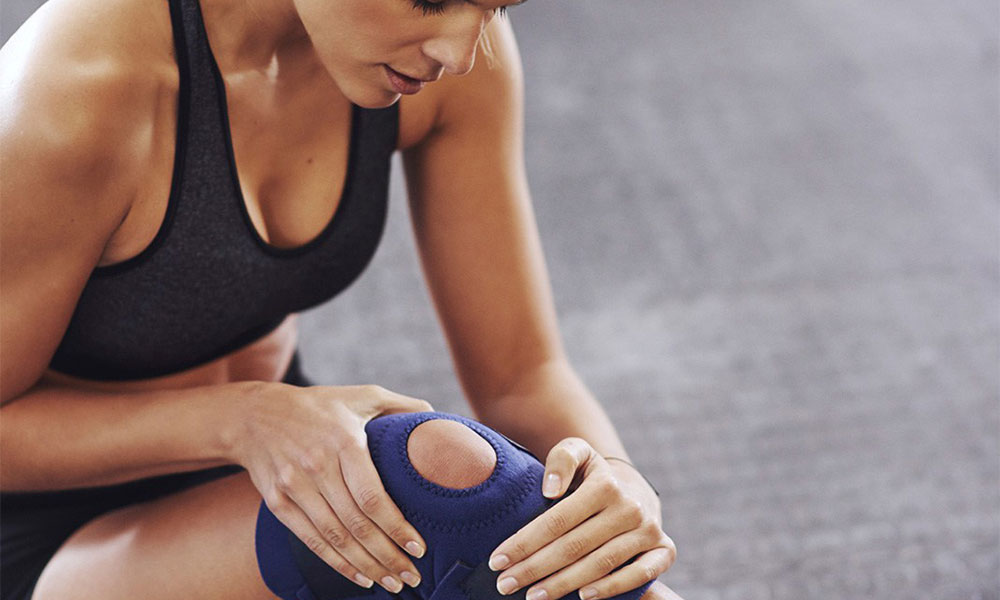If you have a sports injury, chances are you will need to take some time off to rest, recover, and regroup. But if you don’t want to stop all exercise, there are ways to maintain fitness while recovering from an injury.
Maintaining Your Fitness Base
Athletes who are injured often worry about losing fitness during time away from training. Detraining or deconditioning is a fact of life when you stop exercise, but if you simply want to maintain a base of fitness, there are a few ways to stay active.
Studies have shown that you can maintain your fitness level even if you need to change or cut back on your exercise for several months. In order to do so, you need to exercise at about 70 per cent of your VO2 max at least once per week.
Before you do any exercise after an injury, it’s wise to get the approval and recommendations of your treating physician or therapist. Follow their recommendations for when you can resume exercise, how much, and what type of exercise is best.
Smart Ways to Confirm You’re Ready for Exercise Again After an Injury
Even if one body part or joint is immobilized, there’s usually no reason that you can’t find other ways to stay fit while rehabilitating by using the principles of cross-training. It may take some creativity and the flexibility to try new things, but most athletes find training through injury is possible and not terribly difficult. The key is to maintain the right attitude and remain active within your tolerance until your injury is healed. Here are some ways to continue working out while recovering from four common injuries.

Ankle and Foot Injuries
If your ankle or foot is injured, you still have many exercise options. If your doctor approves it and you are able to, using the rowing machine, a stationary bike with one leg or swimming are possibilities. Work with your doctor or trainer to find other non-weight bearing cardio exercise you can do and spend 30 to 60 minutes about three times a week on that exercise to maintain endurance.
Circuit training is also a great choice for exercising through injuries. Here is one sample workout to try in your local gym:
- Perform the following circuit workout Monday, Wednesday, and Friday.
- Perform each exercise for 30 to 60 seconds—allow 15 seconds of rest between stations
- Complete the entire circuit three to four times
- Warm-up thoroughly before exercise
- Leg Extension Machine
- Chest Press
- Lat Pulldown
- Overhead Press
- Seated Cable Rows
- Stability Ball Push-Up
- Ab ‘Bicycle’ Crunches
- Hanging Leg Raise
Leg and Knee Injuries
Leg and knee injuries can be fairly limiting for most athletes. Almost all endurance exercise requires flexion and extension of the knee joint, so developing a new routine may be frustrating. One-legged cycling, kayaking, or using an upper-body ergometer (handcycle) are options. Swimming may be possible if you use a pull buoy so you don’t kick or use your legs.
Here are two circuit training routines to try:
Circuit 1:
- Perform this workout Monday, Wednesday, and Friday.
- Perform each exercise for 30 to 60 seconds—allow 15 seconds of rest between stations
- Complete the entire circuit three to four times
- Warm-up thoroughly before exercise
- Pull-Up or Assisted Pull-Up
- Chest Press
- Lat Pulldown
- Overhead Press
Circuit 2:
- Perform this workout Tuesday, Thursday, and Saturday.
- Perform each exercise for 30 to 60 seconds—allow 15 seconds of rest between stations
- Complete the entire circuit three to four times
- Warm-up thoroughly before exercise
- Seated Russian Twist
- Ab Crunch
- V-Sit ab exercise
Elbow and Shoulder Injuries
Shoulder or other upper body injuries often allow the most possibility for continuing traditional cardio exercise because the lower body can be exercised fully. Walking, stair climbing, stationary (hands-free) cycling and the elliptical trainer are all possibilities.
In addition, circuit training routines will maintain strength and power in the non-injured muscles and joints. Consider performing the following circuit routine four to five times per week.
- Perform each exercise for 30 to 60 seconds, unless otherwise noted—allow 15 seconds of rest between stations
- Complete the entire circuit three to four times
- Warm-up thoroughly before exercise
- Stationary cycling for two minutes at a moderate pace and two minutes at a higher intensity
- Leg Press
- Elliptical trainer for two minutes at a moderate pace and two minutes at a higher intensity
- Ab Crunch
- Walking Lunge
- Low Back Extensions
- Treadmill walking for two minutes at a moderate pace and two minutes at a higher intensity (or incline)
- Wall Sit
Lower Back Injuries
Back injuries can be difficult to recover from, so talk with your doctor about the specific type of back injury you have and your exercise limitations before you begin any alternative activities. Walking, swimming or recumbent cycling are generally safe for those with low back pain and this will help you maintain cardiovascular fitness as you recover.
Get your doctor or physical therapist’s to sign off before trying the following circuit.
- Perform the following circuit workout Monday, Wednesday, and Friday.
- Perform each exercise for 30 to 60 seconds—allow 15 seconds of rest between stations
- Complete the entire circuit three to four times
- Warm-up thoroughly before exercise
- Complete 30 to 60 minutes of non-weight bearing cardio on Tuesday, Thursday, and Saturday.
- Chest Press
- Lat Pulldown
- Overhead Press
- Leg Extension Machine
- Wall Sit
A Word From Verywell
When you are injured, you don’t want to lose all of the fitness gains you have made. You may want to work with a personal trainer to design an alternate fitness routine. You also need to use coping strategies to address the emotional effects of having an injury so you won’t be too discouraged to continue your fitness efforts. With proper healing time and rehabilitation, you may be able to return to your favourite sports or fitness activities in good shape.


